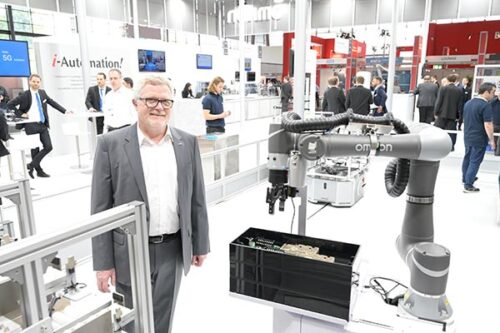 While a new year is upon us, with all its opportunities, OMRON Europe names the top five trends that will impact and shape industrial automation in 2023 and beyond. The manufacturing industries will continue to face many challenges and riding them out will involve building resilience and flexibility into business models. At the same time, companies must embrace emerging technologies – sensing, robotics, 5G and artificial intelligence – to help the solve the problems they face as a result of societal challenges.
While a new year is upon us, with all its opportunities, OMRON Europe names the top five trends that will impact and shape industrial automation in 2023 and beyond. The manufacturing industries will continue to face many challenges and riding them out will involve building resilience and flexibility into business models. At the same time, companies must embrace emerging technologies – sensing, robotics, 5G and artificial intelligence – to help the solve the problems they face as a result of societal challenges.
Trend #1 Value for money
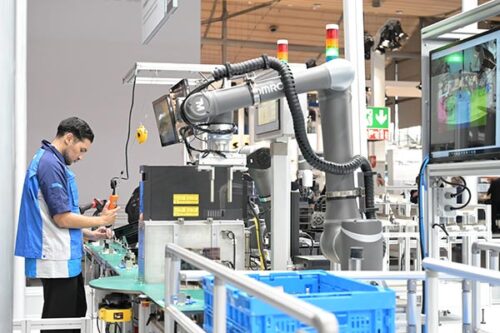 There is no escaping the fact that inflation will cause the cost of equipment and components to increase in 2023. Therefore, automation providers will need to focus on providing solutions that neutralise these cost increases by generating value for users. Fernando Colás, CEO of OMRON’s Industrial Automation Business Unit (IAB) in Europe, comments: “As an example, at OMRON, we always offer a complete and connected solution, not just products. This is encapsulated in OMRON’s innovative-Automation approach – which is how we generate value through our solutions. All our innovation is underpinned by the three ‘i’ pillars: integration (control evolution), intelligence (developing intelligence through ICT) and interaction (human-machine collaboration).”
There is no escaping the fact that inflation will cause the cost of equipment and components to increase in 2023. Therefore, automation providers will need to focus on providing solutions that neutralise these cost increases by generating value for users. Fernando Colás, CEO of OMRON’s Industrial Automation Business Unit (IAB) in Europe, comments: “As an example, at OMRON, we always offer a complete and connected solution, not just products. This is encapsulated in OMRON’s innovative-Automation approach – which is how we generate value through our solutions. All our innovation is underpinned by the three ‘i’ pillars: integration (control evolution), intelligence (developing intelligence through ICT) and interaction (human-machine collaboration).”
Trend #2 OpEx rather than CapEx investments
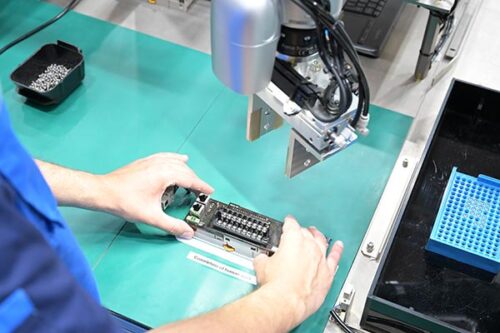 At the same time, many businesses are halting CapEx spending due to the economic climate – inflation is always accompanied by a rise in interest rates, which means it will take longer for projects to yield a return on investment. However, businesses are aware that they still need to invest in automation to stay on top of their game, keep growing and drive efficiencies, which is contributing to a shift towards CapEx investment models. OMRON predicts that we will see this trend gather pace in 2023 and leasing options that ease the capital investment burden will gain popularity for automation projects. To assist companies who are considering investing in collaborative or mobile robots gain a quick and easy overview of return on investment based on actual data, OMRON has launched a ROI calculator with both OpEx and CapEx options, and also offers financing solutions such as leasing options.
At the same time, many businesses are halting CapEx spending due to the economic climate – inflation is always accompanied by a rise in interest rates, which means it will take longer for projects to yield a return on investment. However, businesses are aware that they still need to invest in automation to stay on top of their game, keep growing and drive efficiencies, which is contributing to a shift towards CapEx investment models. OMRON predicts that we will see this trend gather pace in 2023 and leasing options that ease the capital investment burden will gain popularity for automation projects. To assist companies who are considering investing in collaborative or mobile robots gain a quick and easy overview of return on investment based on actual data, OMRON has launched a ROI calculator with both OpEx and CapEx options, and also offers financing solutions such as leasing options.
Trend #3 Harmonised automation
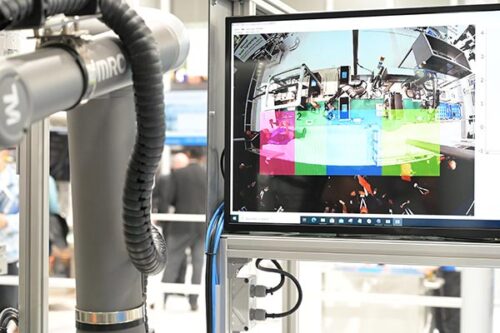 Industrial automation has historically been viewed as a replacement for labour. With collaborative robotics and automation, OMRON has moved towards workers and machines working alongside one another. Colás comments: “We believe that this will evolve into harmonised automation, an approach that will help businesses maximise human capabilities through people-oriented automation technologies. Accelerating data-driven operations through digitalisation will be key to this business transformation and people empowerment.”
Industrial automation has historically been viewed as a replacement for labour. With collaborative robotics and automation, OMRON has moved towards workers and machines working alongside one another. Colás comments: “We believe that this will evolve into harmonised automation, an approach that will help businesses maximise human capabilities through people-oriented automation technologies. Accelerating data-driven operations through digitalisation will be key to this business transformation and people empowerment.”
AI-assisted high-speed control, for example, will help less experienced workers to make better decisions. Building more harmonious and stronger relationships between people, machines and the environment will become the main target in automation. Harmonised automation solutions that improve productivity whilst reducing carbon footprint will be the way forward.
Trend #4 Adapting to autonomous manufacturing
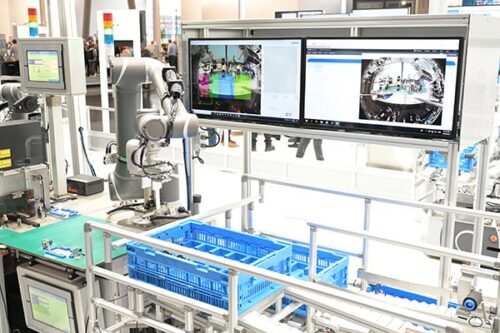 OMRON predicts that the next few years will see the transition from an ‘optimisation’ society, in which consumption is the main driver and quantity is valued more than quality, to an ‘autonomous’ society, which prioritises quality, sustainability and the development and wellbeing of the individual. This trend will play out in the manufacturing space as we move to ‘autonomous’ manufacturing. A decade ago, China was the factory of the world, mass consumption was the main driver for production and very little consideration was given to raw materials usage and the environment. Today, companies are transitioning away from this mindset towards an approach that prioritises sustainability, the development and wellbeing of the individual, and quality over quantity. Automation solutions will evolve to reflect this trend, helping manufacturers to achieve carbon neutrality, digitalisation and improved quality of life for staff.
OMRON predicts that the next few years will see the transition from an ‘optimisation’ society, in which consumption is the main driver and quantity is valued more than quality, to an ‘autonomous’ society, which prioritises quality, sustainability and the development and wellbeing of the individual. This trend will play out in the manufacturing space as we move to ‘autonomous’ manufacturing. A decade ago, China was the factory of the world, mass consumption was the main driver for production and very little consideration was given to raw materials usage and the environment. Today, companies are transitioning away from this mindset towards an approach that prioritises sustainability, the development and wellbeing of the individual, and quality over quantity. Automation solutions will evolve to reflect this trend, helping manufacturers to achieve carbon neutrality, digitalisation and improved quality of life for staff.
Trend #5 Insulation against supply chain instability
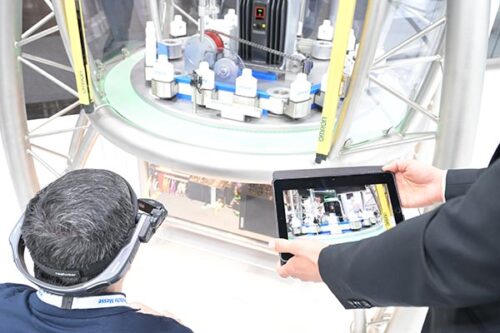 In 2022, the automation industry was caught out by a number of supply shocks, most notably the chip outage, and has been working hard to insulate against future supply chain disruption. At OMRON, for example, the company has redesigned over 1,000 products to make them universally compatible in terms of components. This has been a huge undertaking but will make it easier to substitute components in the event of shortages. OMRON has built more flexibility into its production processes and adapted the company’s capacity to component scarcity cycles. OMRON has duplicated production lines across the world so that when there are shortages in one region it can produce in another. The net result of these initiatives should be that users of automation are better protected against supply uncertainties going into 2023.
In 2022, the automation industry was caught out by a number of supply shocks, most notably the chip outage, and has been working hard to insulate against future supply chain disruption. At OMRON, for example, the company has redesigned over 1,000 products to make them universally compatible in terms of components. This has been a huge undertaking but will make it easier to substitute components in the event of shortages. OMRON has built more flexibility into its production processes and adapted the company’s capacity to component scarcity cycles. OMRON has duplicated production lines across the world so that when there are shortages in one region it can produce in another. The net result of these initiatives should be that users of automation are better protected against supply uncertainties going into 2023.
Commenting on these trends, Fernando Colás, CEO of OMRON’s Industrial Automation Business Unit (IAB) in Europe, summarizes: “As a business, we have always held the belief that social challenges drive technological development and vice versa. This has never been more applicable than today, when we face a myriad of challenges, from climate change to an aging population and the rising cost of living. In 2023, OMRON will be harnessing technology to help various industries to ease labour shortages, enhance productivity and achieve carbon neutrality. Ultimately, our aim is to build an efficient production floor where both harmony with the environment and worker satisfaction are achieved.”


